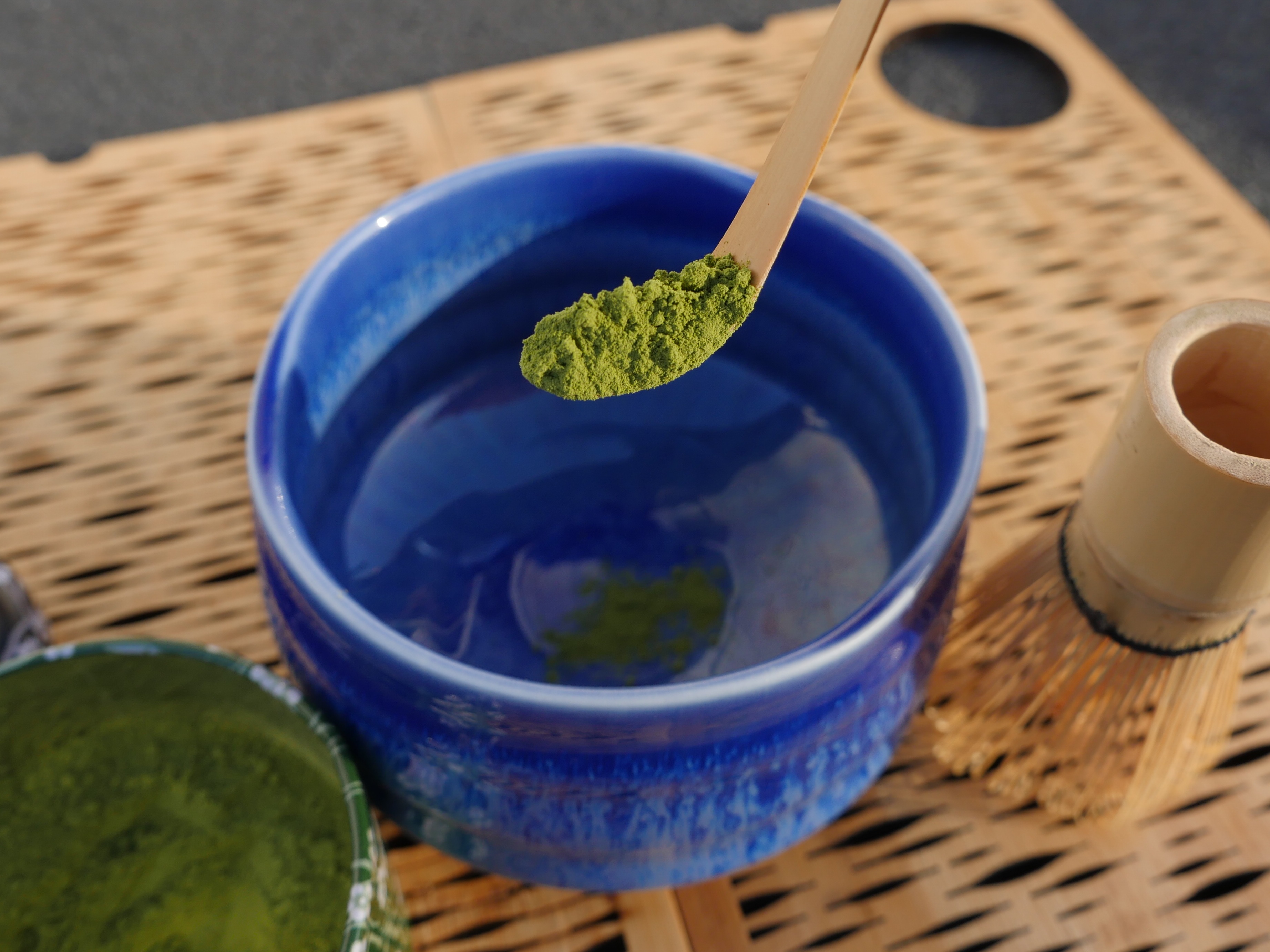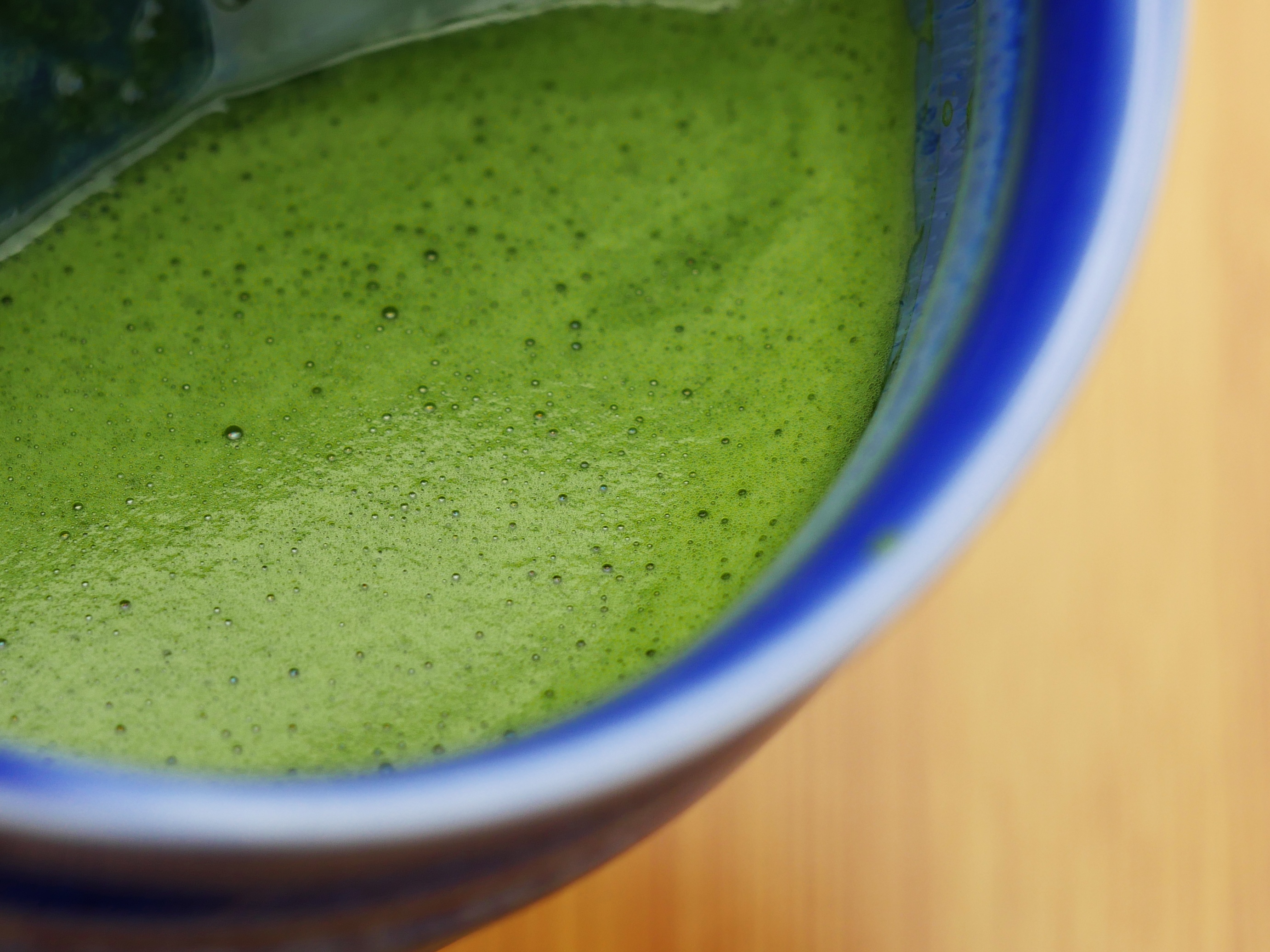Stop making Matcha wrong and start enjoying its taste and benefits with our recommended tips and tricks:
1. Get GREAT Matcha
Pick a Ceremonial grade and get curious about the cultivars
You want the highest quality Matcha, so choose a Ceremonial grade (not the Culinary grade) for drinking, and even cooking too.
'Ceremonial grade' Matcha means: Spring-picked and shade-grown Tencha ground by stone mills at a low temperature to under 10 microns of fineness.
The seller must be able to tell you which cultivar the Tencha was made from. This is basic information. Yabukita is the most common one. We prefer blends of cultivars, especially those with Uji Hikari which is our favourite cultivar.
Always read the label and look for the cultivar name.
2. Drink it from a BOWL
Wider rim = more flavour
It doesn't have to be a Chawan as you can use any wide-rimmed bowl in your kitchen. Just remember that Matcha tastes better in a bowl than a cup or mug.
This is because a good Matcha has a very complex blend of tastes - from floral to creamy, from savoury to sweet, from smooth to bitter. To actually taste all this complexity properly the Matcha should first cover your tongue: all over the front, the sides and the back before moving down the throat.
In contrast, the narrower rim of your teacup or mug will funnel the Matcha straight over the tongue and into the throat where earthy and bitter notes are picked out. Meanwhile, the sides of your tongue, which are more sensitive to the sweeter aspects of Matcha, are left out.
So use a wider rim that allows for bigger sips that expose your tongue's full range of sensitivity to all the nuances of Matcha's flavour.

3. LESS is More
Don't dilute it
Matcha is not meant to be endured but enjoyed as a treat of concentrated goodness. No need to make a watery Matcha just so you can bear it.
If you are diluting it with water then you are missing out on a pleasurable balance of flavour and texture that's been enjoyed by tea drinkers for hundreds of years.
For the tea/water ratio we recommend 1 heaped teaspoon (or 2 scoops of Chashaku) and 60ml of water which is under a quarter of a mug.
But don't just pour the water in, stir and drink. Make a paste of your Matcha, first.
4. Keep it COOL
Start with 70°C/160F
To get the balance right between your Ceremonial grade Matcha's high level of savoury L-theanine amino acid and bright Catechin antioxidant, use the right water temperature to control those contrasting flavours and create a fuller-flavoured treat.
Get your water hot enough to bring out the Catechins' brightness without accentuating their bitterness. We recommend you start with 70°C/160F water temperature and then adjust it to taste depending on how strong you prefer your tea and the quality of Matcha in your bowl.
No temperature control kettle? No problem. Simply boil your water and then pour some cold water (half the amount of what's in the kettle already) into the kettle to bring the water temperature down to the 70°C/160F we recommend.

5. TEXTURE is Key
Paste it first
Matcha should be an ultra smooth, velvety (and usually frothy) treat that delivers a luxurious mouthfeel. (That's why it has to be ground to under 10 microns.)
Once you have an appropriate water temperature ready, prepare the Matcha by adding a splash of hot water (about 10ml) onto the powder and whisk it into a paste. You can use either a Chasen or an electric whisk but focus on turning those clumps of powder into a smooth and consistent paste.
Next, add the remaining hot water (50-60ml) and stir the paste, making sure no clumps are left on the sides in your bowl. Take your time until no powder is left in the bowl or between the bristles of your whisk. Do this well and the final sip will be as smooth as the first.
When your Matcha is a smooth liquid, go for the froth. Move your whisk in a 'W' motion, starting from the bottom of the bowl and raising the whisk up as you speed up that 'W' pattern until you get a beautiful bubbled crema on top of your Matcha.
If the froth disappears you can whisk your Matcha again to reinvigorate it. The texture should be soft, creamy and viscous, with a delightfully light froth.
6. LINE Your Stomach
No need for nausea
Matcha contains caffeine alongside a rich mix of plant-based compounds. That's great if you need a natural energy boost, but not so great on an unprepared tummy. At least at the beginning.
Matcha's energising, rich potency can make you feel nauseous if you drink it on an empty stomach. This is a natural reaction and there is nothing wrong here with Matcha itself. Simply make sure you have a bite to eat before drinking your Matcha.
That's how you ease Matcha into your morning routine and feel great.







